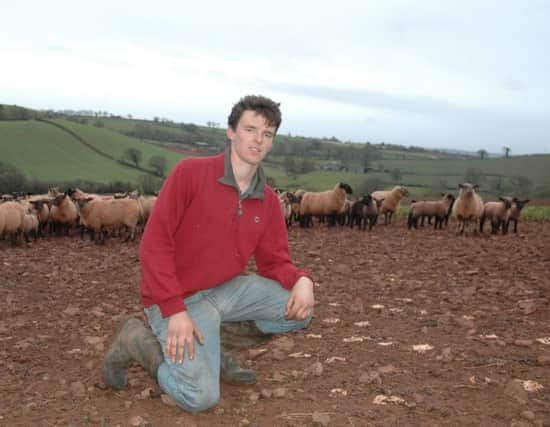Fast finishing lamb from forage


Grazed grass combined with folded kale and swedes are making a significant contribution to the unit’s entire crop of Hampshire Down cross lambs achieving an average 19.5kg deadweight at 15 weeks and grading R3L and U3L, performance which he says delivered to target and was reflected in gross margins.
“Our system is all about getting the lambs finished as quickly as possible which means reaching target finishing weight from 12 weeks and grading within the specification. It’s about maximising the use of forage, reducing inputs, making fewer draws and minimising vet and med requirements which all add up to reduced labour,” explains Matthew, who manages the flock singlehanded.
Advertisement
Advertisement
“For the January lambing flock we’ve found an answer in using the Hampshire Down as a terminal sire selected from within the breed’s top 10% of Signet performance recorded data - rams with high EBVs for growth rate and muscle depth.
“We find the Hampshire Down sired lambs are easy to lamb, they have got plenty of get up and go and are very quick to suckle after birth which really suits our early lambing system. We’ve found they don’t require the attention that some Continental cross lambs need, and as always they’re quicker to finish.”
The 800 ewe flock which supplies lambs to Dalehead for Waitrose, is managed on the Crooke family’s 600 acre mixed unit which includes 200 acres of grazed grass, 30 acres of kale and six acres of swedes.
“Sheep are outdoor animals, and best managed that way for best health, welfare and overall performance,” he says. The flock is out wintered on kale allowing a wedge of fresh grass to be built up over winter. Ewes scanned with doubles are housed three weeks before lambing, and singles, 10 days ahead.
Advertisement
Advertisement
“We turn out to grass 48 hours after lambing, and being very vigorous and hardy means these lambs have proved year in year out they can cope whatever the weather in January, we don’t have to look back.”
Ewes and lambs are grazed for four to five weeks before being folded on swedes from late February to early April. The system frees up grass for the 400 ewes lambing in late February. By the time the early lambing flock has finished the swedes, there is sufficient grass for all ewes and lambs.
Lambs are introduced at two weeks of age through to finishing a home mix creep comprising coarse rolled barley, oats, beet pulp, soya, molasses and vitamin mineral pre-mix.
HDSBA’s Northern Ireland Premier Sale will take place at Ballymena on 1 August, show 4pm, sale 7pm; and offer 10 shearling rams, 26 ram lambs and 16 ewe lambs.
Further information from Victoria McFadden on 07897803422.